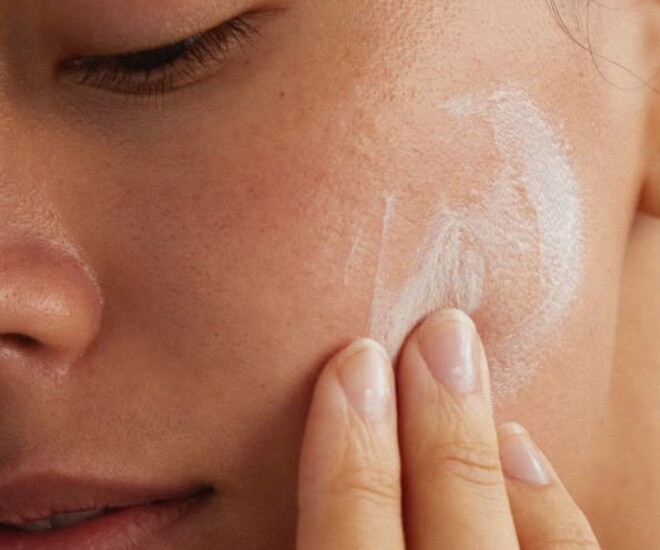
It’s important for women to understand the correct way to apply sunscreen to prevent collagen breakdown.
Sunscreen Application Technique: Patting or Rubbing?
A seemingly simple question, but one that sparks debate: when applying sunscreen, should you pat or rub it in? Many people have the habit of rubbing it vigorously, thinking that it will help the product absorb faster and even believing that a stronger “friction” will make the sunscreen last longer. However, in reality, this action not only fails to enhance the effectiveness but can also distort the distribution of the product on the skin’s surface.
Rubbing vigorously can cause the product to accumulate in wrinkles, pores, or slide off areas that need protection, such as the bridge of the nose, around the eyes, and hairline. This allows UV rays to penetrate these “gaps” and attack the deeper layers of the skin, where collagen and elastin—essential for skin elasticity and youthfulness—are found.

Gently patting the sunscreen onto the skin is the optimal method to preserve collagen and elastin for youthful skin.
On the other hand, gently patting or tapping the product onto the skin ensures even distribution without damaging the skin’s structure. This method is favored in Korean and Japanese skincare routines—renowned for their meticulous attention to skin care. Patting maintains the integrity of the sunscreen, provides better coverage, and prevents displacement due to excessive mechanical force.
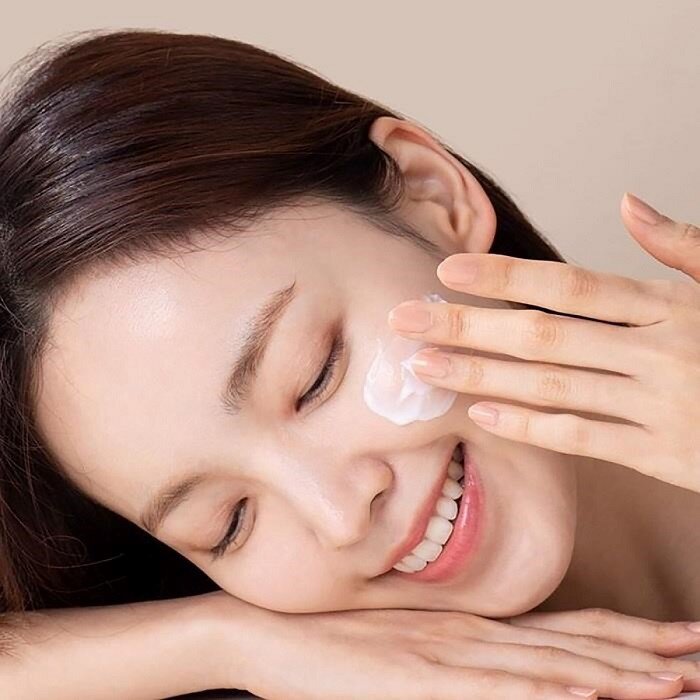
This seemingly small step plays a significant role in the journey to protect collagen and prevent aging.
Not only does the patting technique maximize the product’s effectiveness, but it also avoids creating pulling forces on the skin—a potential factor in skin sagging over time.
VIDEO: The correct way to apply sunscreen is to gently pat it onto your face to ensure even coverage.
Applying Enough: A Prerequisite for Effectiveness
No matter how good your sunscreen is, if you don’t apply enough, its effectiveness will be significantly reduced. One common mistake is applying a very thin layer, just enough to eliminate the oily shine, and then feeling reassured.
According to the American Academy of Dermatology, the ideal amount of sunscreen for the entire body is about 1–2 oz (equivalent to a small wine glass). For the face and neck alone, the amount required is about two fingers’ length. However, surveys show that most people only use about 25–50% of this amount. This drastically reduces the UV protection, leaving it at only about 20–50% of the SPF value stated on the label.
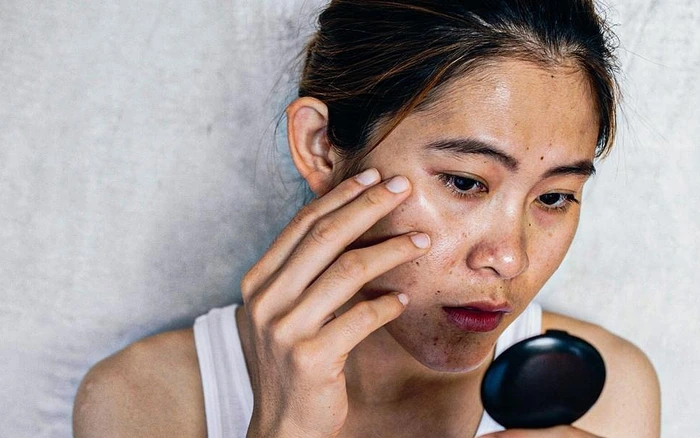
Not applying enough sunscreen is one of the biggest reasons for skin aging, even when sunscreen is used regularly.
Consequently, the protective layer becomes insufficient to block UV rays, allowing UVA and UVB to penetrate and silently break down collagen. Over time, this leads to skin discoloration, sagging, and even an increased risk of DNA damage—a precursor to skin diseases, including cancer.
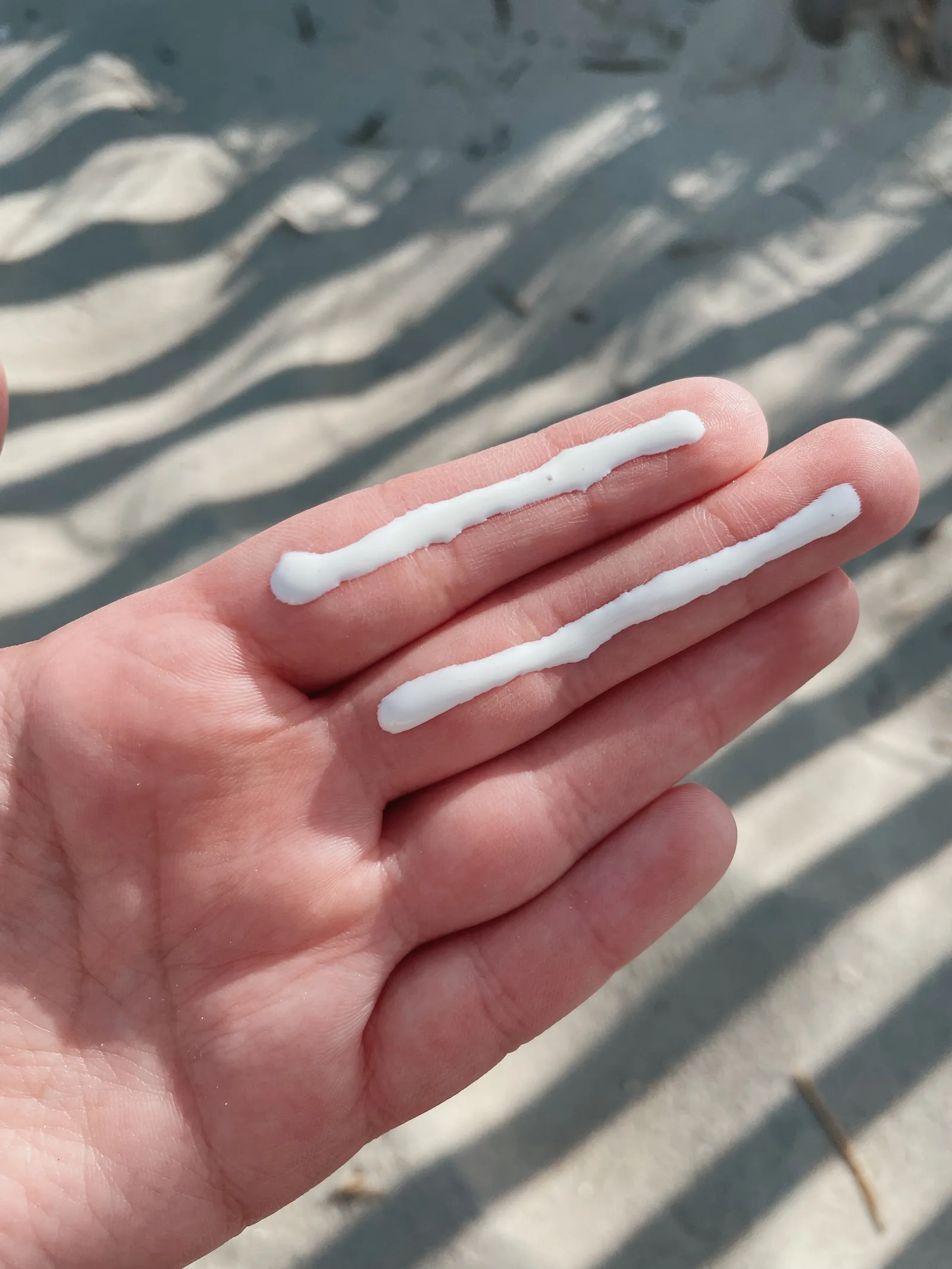
The amount of sunscreen needed for the face and neck is approximately two fingers’ length.
The solution is not to apply a thick layer but to divide it into 2–3 thin layers, ensuring you get the right amount while avoiding a sticky feeling. Additionally, don’t forget areas that are easily overlooked, such as the ears, back of the neck, palms, hairline, and the front of the neck—all of which are also susceptible to sun damage.
Going Out Immediately After Applying Sunscreen
Another basic mistake is applying sunscreen and then stepping out into the sun immediately. With the morning rush, many people apply sunscreen just before leaving the house, unaware that they are doing the entire sun protection process incorrectly.
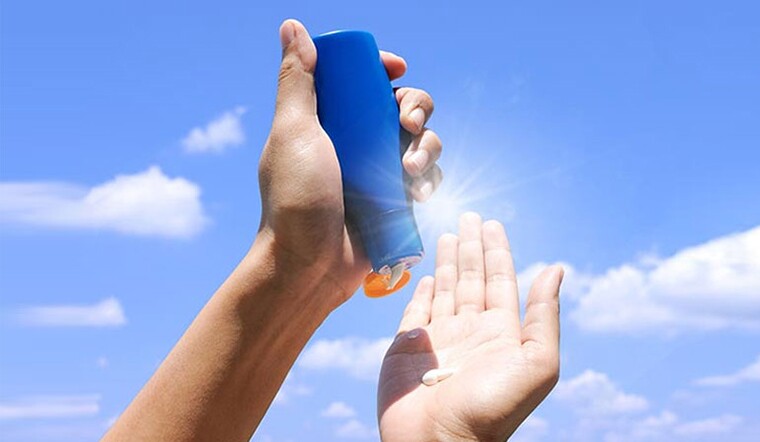
Sunscreen needs about 10-20 minutes to reach its full effectiveness.
The reason for this is that most chemical sunscreens need about 20–30 minutes to become fully effective. They require time to bind to the skin’s surface, forming a protective layer that absorbs and neutralizes UV rays. If you go out too soon, the sunscreen hasn’t had time to stabilize and can easily be removed by sweat, friction from masks or clothing, rendering its protective effect almost non-existent.
According to Dr. Jeannette Graf of Mount Sinai Medical Center (New York), “30 minutes is the ideal time for sunscreen to provide maximum protection against UV rays.” This is especially important if you plan to be outdoors continuously or in areas with high UV indices.
The correct habit is to apply sunscreen while still indoors, before getting dressed if you need full-body protection, and allowing the product to settle on the skin. Additionally, don’t forget to reapply every 2 hours or after sweating profusely, swimming, or wiping your face with a towel.
Is Slathering on Sunscreen Really Good? Expert Reveals How to Apply Sunscreen the Right Way
Applying sunscreen is an essential step in any daily skincare routine, alongside cleansing and moisturizing. While it is a crucial protective measure against the harmful effects of UV rays, sunscreen also helps prevent skin aging and cancer. However, a common misconception exists that applying more sunscreen leads to better protection. But is this belief accurate?



































